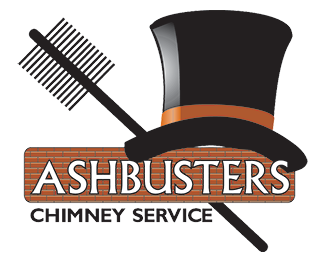As days got shorter and the weather got colder, we retreated indoors to the warmth of our homes and hearths. For those of us who made use of a fireplace during these cold weather months, spring is a great time to make sure the chimney and flue are in good working order following this period of extensive use. If your assessment uncovers any issues that give you pause, call in a chimney professional to diagnose the problem before it gets big, expensive, and potentially dangerous.
Your chimney is a structure that’s made of masonry and/or metal, which surrounds and supports a flue or multiple flues that vent the products of combustion from gas, oil, or solid fuel appliances or fireplaces. The flue is the inner part of the chimney that actually contains and vents all of the various products of combustion. Flues can be made of clay, as is the case of most masonry chimneys, or of metal, as is the case of prefabricated or manufactured chimneys. One way to think of a chimney and the flue within it is as a structure built to protect you. That is an important function of all chimneys no matter what kind of appliance or fireplace they serve. Exterior staining due to flue gases seeping through the chimney structure, broken or spalled bricks, and deterioration of mortar joints are all signs that your chimney may need repair.

Please don’t try to do chimney repairs or cleaning yourself. Call us and we’ll make sure the job is done thoroughly and safely.
Cracking or Spalling Brick is known for its durability, but time and the elements can cause bricks to crumble or flake, a condition commonly referred to as spalling. Spalling is caused when the masonry absorbs too much moisture from rain/snow and is subjected to freeze/thaw cycles. Spalling bricks have cracks and breaks in the surface and often large, crater-shaped chips. These bricks need to be repaired or replaced. The best way to avoid brick spalling is to eliminate the moisture. If the area around your chimney crown is cracked or the cap itself is defective, this allows water to seep into the brickwork below.
Missing, Loose or Deteriorated Mortar Open mortar joints and cracks in the mortar also cause water to penetrate your brickwork. A good repointing job, using proper materials, will enhance your chimney’s lifespan and will enhance its appearance, too. Repointing is far more than just slapping some mortar into your chimney’s cracks. The process requires different skills than traditional masonry, and even brick masons with years of experience might not have significant experience repointing chimneys. The biggest challenge of repointing is determining just how much mortar is damaged and removing it without causing additional damage. Once the damaged mortar has been removed, the new mortar must be mixed; this mortar should be as similar to the original mortar as possible to avoid premature mortar deterioration down the road. The mortar is then placed between the brick via a layering process involving compacting and tooling the new mortar to help it adhere to the old mortar much better.
Chimney Flashing Chimneys are notorious for leaking; the culprit of these leaks is almost always the flashing, which lies at the point where the chimney rises above the roof. It keeps water out of the chimney, protecting both the flue and roof. Flashings are made from a variety of materials (e.g., aluminum, copper, galvanized steel, and/or tin). You’ll want to have new chimney flashing installed if you have any of the following issues:
- The flashing is missing
- Your flashing is rusted through
- The flashing is falling out
- Your flashing is completely covered with roofing tar (this is a common short-term fix that’s sure to be hiding bigger problems)
Many homeowners also opt to have new flashing installed when having new shingles put on because they want it to last as long as the new roof.
Chimney Cleaning Sooner or later, every chimney needs to be cleaned in order to remove creosote buildup. It is highly recommended that you leave this task to a CSIA Certified chimney sweep. The frequency for your cleanings will vary based on the amount of use your fireplace receives, but it should never be any longer than a year between cleanings, as the likelihood of a clean chimney catching fire is far less than a dirty one.
It’s easy to understand why it is strongly recommended that all flues and chimneys in use should receive annual inspections. In fact, you may want to consider more frequent inspections for chimneys and flues that receive heavy use, especially those venting hotter flue gases that contain creosote and soot produced by solid fuel burning fires. A proper inspection of your chimney by a qualified chimney professional should include a thorough examination of the external structure to look for signs of deterioration or weakness. The evaluation should also include a visual inspection of the flue inside your chimney. According to the NFPA code, cracked chimney liners constitute a significant safety hazard and must be replaced. The chimney professionals at Ashbusters Charleston are fully prepared to meet all of your chimney inspection and repair needs. Give us a call today!
